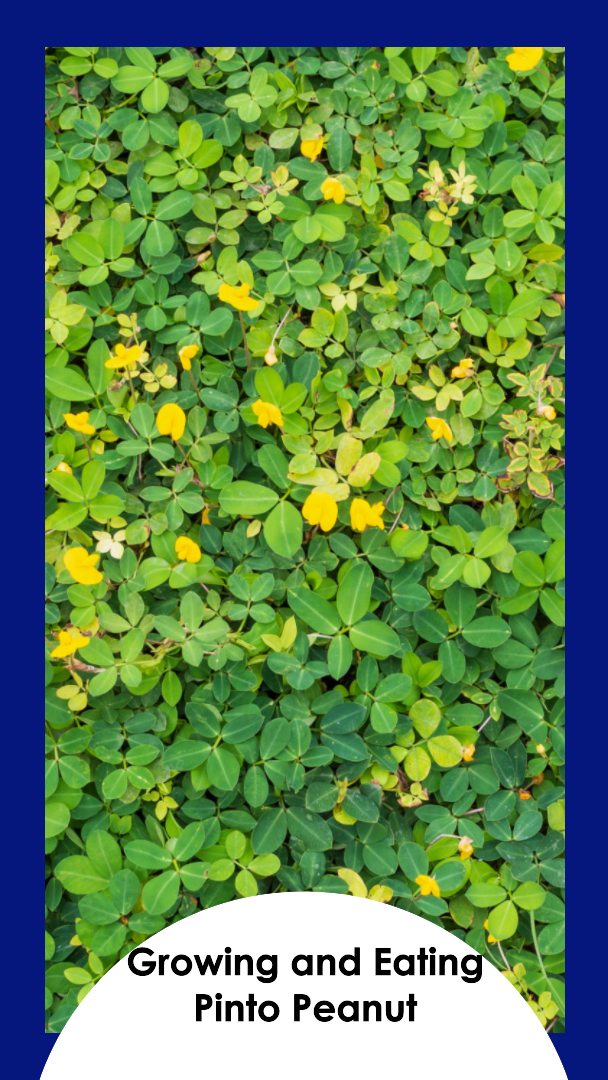Welcome to OrganicMotion, your go-to source for organic gardening inspiration. In this blog post, we’re excited to introduce you to Pinto Peanut (Arachis pintoi), a low-growing perennial legume that offers a myriad of benefits to your garden. Though not suitable for human consumption, Pinto Peanut serves as an excellent living mulch, providing protection, enriching the soil, and attracting the interest of landscapers and animal keepers alike. Join us as we delve into the description, uses, growing details, and its role in supporting sustainable agriculture.
Description and Noteworthy Traits:
Pinto Peanut is a low-growing, creeping legume that forms a thick mat, reaching a depth of 20-30cm. With its strongly tap-rooted structure and secondary nodulated roots, this plant exhibits exceptional resilience and adaptability. Its emerald green leaves create a lush appearance, while the bright yellow flowers, resembling small orchids, add a splash of color to the landscape. The pollinated flowers develop elongated stalks that penetrate the soil, hosting one-seeded pods underground, enhancing the plant’s ability to thrive and reproduce.
Versatile Uses and Functions:
While not suitable for human consumption, Pinto Peanut offers numerous advantages in the garden. Its dense growth habit makes it an ideal living mulch for orchards, as it competes minimally with tree crops for moisture. As a ground cover, it protects the soil surface from erosion and improves soil structure. Pinto Peanut outcompetes weeds effortlessly, requiring minimal maintenance, and delivers significant supplies of nitrogen, calcium, phosphorus, and potassium. Moreover, its taproots penetrate and break up compacted soil, contributing to soil health and aeration.
Landscapers are increasingly adopting Pinto Peanut as a sustainable grass substitute for local councils, and it serves as a valuable legume for animal pastures.
Nutritional Value and Livestock Benefits:
Although not suitable for human consumption, Pinto Peanut offers exceptional nutritional value for livestock, including guineafowl. Its foliage provides a nutritious forage option, contributing to the overall health and well-being of animals. Livestock can graze on Pinto Peanut, benefiting from its high-quality feed while enjoying its palatability.
Growing Details and Care:
Growing Pinto Peanut is relatively straightforward, and it can be propagated from both seeds and cuttings. Cuttings measuring 15-20cm in length can be buried 2-3cm in the soil, spaced 35cm apart for optimal growth. It is recommended to plant Pinto Peanut during the wet season when moisture levels are favorable for establishment. The plant thrives in moist, well-drained soils with a neutral pH ranging from 6.6 to 7.3. Pinto Peanut can tolerate full sun to heavy shade, making it a versatile option for various garden conditions. While it prefers high rainfall and frost-free areas, it can withstand some periods of flooding and survive dry spells up to 4 months.
Pinto Peanut is living mulch!
Pinto Peanut, with its low-growing habit and remarkable adaptability, is a valuable addition to any organic garden. From acting as a living mulch in orchards to improving soil structure and supporting sustainable agriculture, this resilient legume offers a host of benefits. While not suitable for human consumption, Pinto Peanut provides nutritious forage for livestock and has caught the attention of landscapers seeking sustainable alternatives. Embrace the versatility and ecological advantages of Pinto Peanut in your garden, and witness its positive impact on your landscape and the surrounding ecosystem. Happy gardening!
